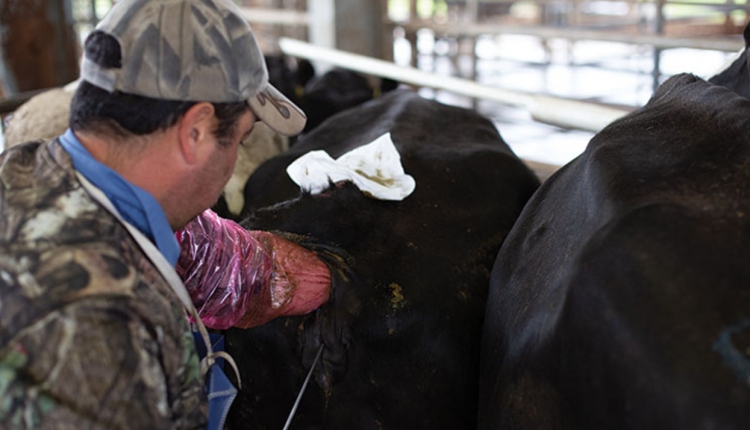The author is a professor of animal sciences at Kansas State University, Manhattan.
Poor heat detection rates, under 50 percent in U.S. dairy herds, are a major factor limiting reproductive efficiency. Even so, detection of behavioral estrus plays an important role in overall reproductive programs on most U.S. dairies despite the widespread adoption of fixed-time, ovulation-synchronization programs.
Most drylot dairies or those with freestall barns and turn-out drylots have the best heat detection rates, often observing over 70 percent of events because cows like solid-standing and sure-footing surfaces. Expression of behavioral estrus depends on several factors including hormonal concentrations and physiological and environmental factors.
One of the most important factors limiting expression of sexual behavior is the surface on which cows are observed for estrus. Cows are more likely to express heat when housed on earthen surfaces rather than dry, grooved concrete surfaces. In fact, when cows were in heat, they spent 22 minutes of each 30-minute test period on dirt, regardless of the heat status of the interacting herdmates that were restrained (tied up) on either an adjoining concrete or dirt surfaces. Mounting activity was three- to 15-fold greater on dirt than on concrete when the restrained cow in heat was on dirt, regardless of the heat status of the cow on concrete.
Cows housed on dirt were in heat longer and showed more mounting and standing activity compared with cows housed on concrete (Table 1). These results indicate that heat detection on dairy farms could be enhanced by moving cows to dirt surfaces for routine observations of heat.

The following observations are key indicators of estrus in cows:
- They spend more time walking, less time lying down, and less time eating or ruminating.
- They bellow more and show more tail twitching. Additionally, tails are often elevated.
- They lick or groom other cows.
- They sniff other cows and show a Flehmen response (curling of upper lip).
- They attempt mounts of other cows (approximately 60 percent of cows are in estrus when they mount the heads of other cows).
- When mounted or anticipating a mount, they turn their heads back to look at the mounting cow.
- They stand to be mounted.
A study determined the stage of the estrous cycle in a group of heifers with the objective to determine which heifers did most of the mounting of other heifers in heat (Table 2). Note that heifers having a CL (high progesterone status) represented nearly half of the heifers in the study but only attempted 5.2 percent of all the mounts. In contrast, heifers coming into heat or in heat themselves representing 24 percent of the heifers accounted for more than 85 percent of all mounting activities.

Any cow having a CL, including all pregnant cows, rarely participate in mounting activities of other cows in heat. Therefore, house the cows you desire to inseminate in groups or pens with other open cows to maximize estrus expression. Because most of the mounting activity is done by cows in heat, synchronizing of estrus can maximize the opportunity to identify more cows in heat.
Detecting estrus is becoming a lost art. It requires good observation skills that can be both taught and learned. Good heat detection can reduce inter-insemination intervals by detecting the first eligible estrus after a failed A.I. breeding. Many dairy operations record with chalk the insemination day (for example, 5 for October 5) on the rump of an inseminated cow to facilitate future reference to when that cow was last inseminated. When reading paint or chalk rubs and finding a questionable cow — palpate her. Feel for tone (she feels like a cow in heat) and observe for mucus. Look for other rub marks on her pin bones or dirt or manure on her sides left behind by a mounting cow.
Let’s use heat detection and good observation skills to get more cows pregnant! Happy A.I. breeding!




